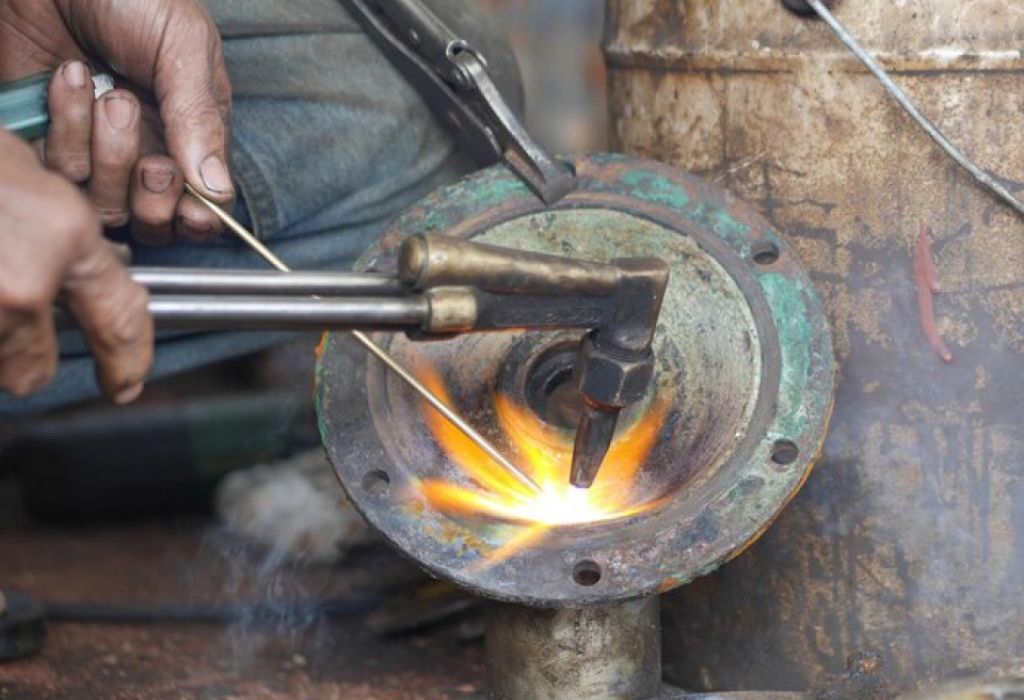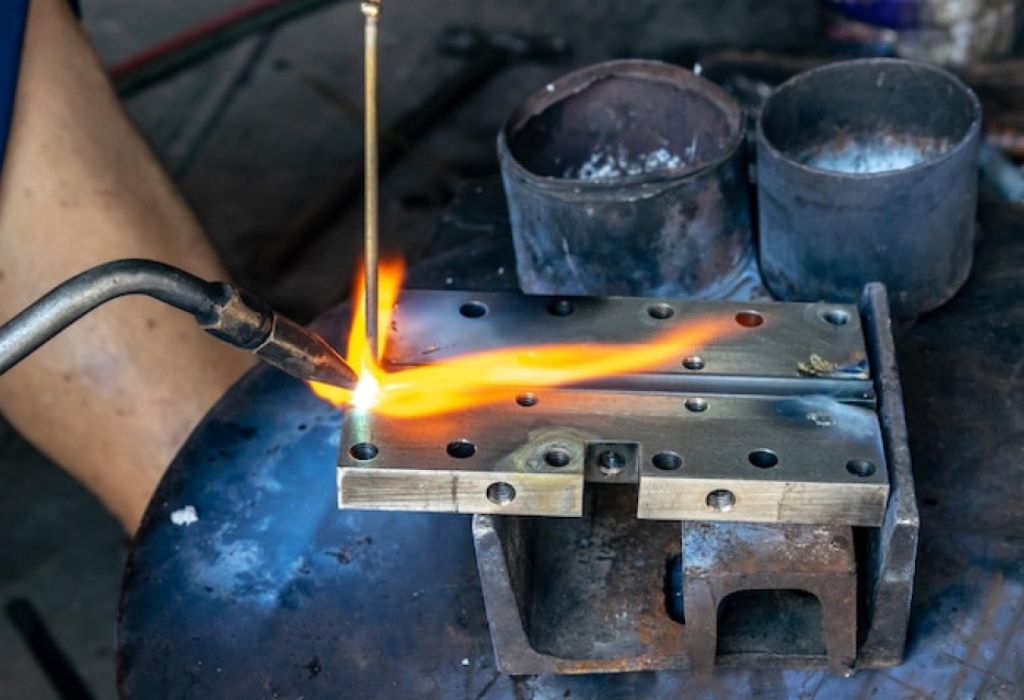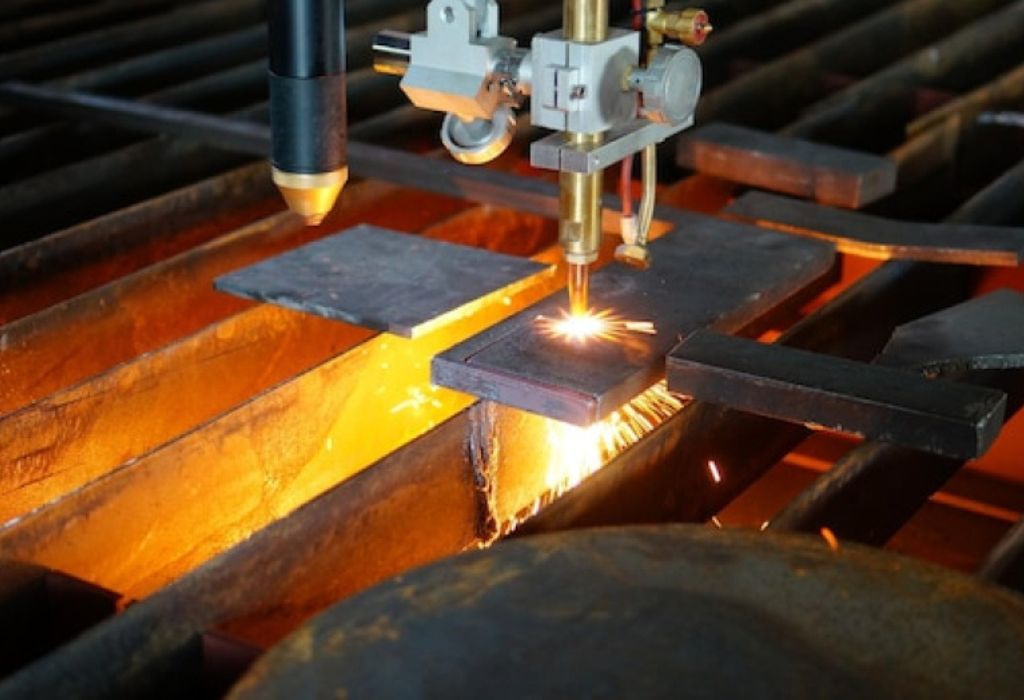Few things are more frustrating than discovering a crack in a cast iron part that once felt indestructible.
Whether it’s a broken exhaust manifold, a cracked engine block, or a damaged skillet, cast iron can fail suddenly and without warning.
Its strength hides a weakness—brittleness—that makes repair tricky and often expensive.
Many assume welding is the only solution, but it’s not always the safest or easiest route.
Welding cast iron requires precise heat control, specialized filler rods, and preheating techniques.
A single temperature mistake can worsen the damage by creating new fractures or distorting the surface.
Research from Materials Today shows that up to 45% of cast iron repair failures occur due to thermal stress from improper welding.
Non-welding methods like epoxy bonding, metal stitching, and brazing eliminate this risk by using cold or low-temperature processes that preserve the material’s structure.
These techniques have advanced significantly, making them accessible even to beginners. Modern metal epoxies can withstand temperatures up to 550°F, while mechanical stitching systems can restore heavy-duty components without introducing heat.
This guide explains exactly how to fix cast iron without welding. You’ll learn what tools you need, how each method works, and which one offers the most reliable results for your specific repair.
1. Understanding Cast Iron and Why It Cracks

Cast iron is known for its strength and rigidity but also its brittleness. It contains a high percentage of carbon, which makes it strong under compression but weak under tension or impact.
When cast iron heats unevenly or experiences sudden cooling, stress builds up and leads to cracks or fractures. That’s why cookware, machinery, and automotive parts made from cast iron often fail in similar ways.
Why does cast iron crack?
Because of its high carbon content, it cannot absorb stress well.
Is cast iron repairable without welding?
Yes, when proper bonding or mechanical methods are used.
What makes cast iron brittle?
The graphite flakes in its structure weaken its tensile strength.
Can cast iron handle vibration or pressure after repair?
Yes, when reinforced with high-strength epoxy or stitching pins.
Why avoid welding cast iron?
Welding can introduce heat stress and new cracks during cooling.
2. Common Causes of Cast Iron Damage
Cracks often appear in cast iron due to temperature shock, rust buildup, impact, or over-tightening during assembly. Even small fractures can spread rapidly if ignored.
What causes cracks in cast iron parts?
Rapid heating or cooling, impact stress, and corrosion.
Does rust weaken cast iron?
Yes, it slowly eats away the metal and exposes weak points.
Can uneven tightening cause damage?
Yes, high localized stress creates hairline fractures.
Does old age affect cast iron strength?
Yes, repeated heating cycles reduce its elasticity.
Can proper maintenance prevent cracks?
Absolutely, regular cleaning and inspection extend lifespan.
3. Why Avoid Welding Cast Iron
While welding can permanently fuse cracks, it comes with major risks. The high heat required for melting cast iron can cause expansion and contraction, leading to warping or new cracks nearby.
Does welding always fail?
Not always, but it often creates weak heat-affected zones.
Why is temperature control critical?
Because uneven heating expands metal faster than it cools.
Can welding ruin cookware or engines?
Yes, excess heat can distort their shape or structure.
Are non-welding repairs better?
Yes, they offer safer, low-heat alternatives.
Is post-weld machining needed?
Often yes, adding time and cost to the repair.
4. Tools and Materials Needed for Non-Weld Repair
Before starting any repair, gather the right tools and materials for safety and effectiveness. Clean surfaces and proper setup are crucial for adhesion.
Essential Tools and Materials:
- High-temperature metal epoxy (like JB Weld or Devcon)
- Sandpaper or grinding tool
- Clamps or vices
- Degreaser and cleaner
- Drill and bits (for stitching or bolt repair)
- Safety gear: gloves, goggles, and mask
Why use epoxy?
It provides durable, heat-resistant bonding.
Is surface cleaning important?
Yes, contaminants weaken adhesion.
Do clamps improve bonding strength?
Yes, they ensure even curing pressure.
Can standard epoxy work on engines?
No, only high-temp metal epoxies are suitable.
How long should epoxy cure?
At least 12–24 hours, depending on temperature.
5. Method 1: Using Metal Epoxy (JB Weld or Equivalent)
One of the easiest and most effective ways to fix cast iron is with high-temperature epoxy. It creates a strong, metal-like bond that seals cracks without introducing heat.
Steps:
- Clean the damaged area using degreaser and sand it for texture.
- Mix the epoxy components as directed.
- Apply evenly along the crack.
- Clamp the part to keep it stable.
- Allow 24 hours of curing before testing.
How strong is JB Weld on cast iron?
It can handle up to 550°F and 3,000 PSI of pressure.
Can it seal leaks?
Yes, it’s ideal for coolant and oil passages.
Does epoxy last permanently?
Yes, if properly applied and cured.
Is sanding required after curing?
Optional, for smoother finish.
Can epoxy repair cookware?
Only if rated food-safe; otherwise, for mechanical parts only.
6. Method 2: Brazing (Low-Temperature Bonding)

Brazing joins cast iron using a filler metal at a much lower temperature than welding. The filler bonds the crack through capillary action, avoiding structural damage.
Steps:
- Clean the crack and apply flux.
- Preheat gently and melt filler (bronze or nickel alloy).
- Let the filler flow into the crack.
- Cool slowly and clean residue.
Is brazing different from welding?
Yes, it occurs below the melting point of the base metal.
What filler works best?
Bronze or nickel-based rods.
Does it require high skill?
Moderate; easier than full welding.
Can brazing restore strength?
Yes, when cooled slowly and cleaned properly.
Is post-cleaning necessary?
Yes, to remove flux and residue buildup.
7. Method 3: Metal Stitching (Cold Mechanical Repair)
Metal stitching is one of the most reliable industrial solutions for fixing cast iron cracks without heat. It uses overlapping pins or locks to restore structural integrity.
Steps:
- Drill holes along the crack path.
- Insert overlapping stitching pins.
- Tighten each to pull the crack closed.
- Grind flush for a smooth finish.
What is metal stitching?
A cold process using pins and locks to close cracks.
Is it permanent?
Yes, widely used in engine and pump repair.
Does it need special tools?
Yes, metal stitching kits or Lock-N-Stitch systems.
Can it fix large cracks?
Yes, up to several inches if reinforced.
Is it expensive?
Moderately, but much cheaper than welding replacement parts.
8. Method 4: Cold Metal Repair Compounds
Cold metal repair compounds are industrial-grade adhesives designed for high-pressure, high-temperature environments.
What are cold metal compounds?
Advanced fillers that mimic metallic properties.
Can they handle heat?
Yes, up to 600°F depending on brand.
Do they bond as strong as metal?
Yes, for smaller cracks or surface damage.
Are they suitable for engines?
Yes, when applied correctly and fully cured.
How long do they last?
Many years under normal use.
9. Method 5: Drilling and Bolting Reinforcement
For large cracks or broken corners, drilling and bolting provide mechanical strength by bridging damaged sections.
Steps:
- Drill matching holes on both sides of the crack.
- Insert bolts with washers and sealant.
- Tighten evenly to distribute stress.
When is bolting used?
When cracks are too wide for epoxy alone.
Can bolts replace missing material?
Partially, if combined with epoxy filler.
Does this weaken the structure?
No, it redistributes pressure evenly.
Is sealing important?
Yes, prevents vibration loosening.
Can it be combined with other methods?
Yes, often paired with epoxy or brazing.
10. Testing and Finishing the Repair
Once repaired, the part must be inspected and tested for strength before use.
Steps:
- Wait for full cure.
- Apply gradual pressure tests.
- Sand or grind rough edges.
- Paint or coat for protection.
How to check for leaks?
Use soapy water or pressure testing tools.
Can the part be painted?
Yes, after full cure.
Should heat be applied after repair?
No, avoid heating epoxied or stitched areas.
How to confirm strength?
Tap test or vibration test under load.
11. Preventing Future Cast Iron Damage
Preventing future cracks saves time and cost. Handle cast iron parts carefully, keep them clean, and avoid temperature shock.
How to prevent thermal shock?
Avoid rapid heating and cooling.
Does rust prevention help?
Yes, use anti-corrosion coatings.
Can seasoning protect cookware?
Yes, it creates a rust-resistant layer.
Should torque be evenly applied?
Always, to avoid localized stress.
Is routine inspection necessary?
Yes, to catch small cracks early.
12. Welding vs. Non-Welding Repair: Cost & Durability

Welding: Expensive, heat-based, and risky.
Non-Welding: Cost-effective, safer, and easier for most users.
Is non-welding cheaper?
Yes, typically 60% less than welding.
Does it last as long?
Yes, when properly done.
Is it safer for fragile parts?
Absolutely, no heat distortion.
Which method suits beginners?
Epoxy bonding or brazing.
Do professionals use non-weld fixes?
Yes, especially for heat-sensitive components.
13. Environmental and Practical Benefits
Repairing instead of replacing cast iron saves both money and the planet. Non-weld methods consume no electricity and produce no toxic fumes.
Is it eco-friendly?
Yes, reduces waste and energy use.
Does it cut carbon footprint?
Yes, fewer replacements mean lower emissions.
Can home users do it safely?
Yes, using proper safety gear.
Is it energy-efficient?
Completely, since no welding heat is required.
Does it extend product life?
Yes, by years with minimal cost.
14. Conclusion
Repairing cast iron without welding isn’t just possible—it’s practical, affordable, and long-lasting. Whether you use metal epoxy, brazing, or metal stitching, each method offers unique benefits depending on the damage type.
By following the right preparation steps and choosing suitable materials, you can restore cast iron to its full strength without risking heat damage or expensive replacements.

I’m Darrell Julian, the founder, lead writer, and hands-on welding enthusiast behind ArcWeldingPro.com. With more than 15 years of real-world welding experience, I created this platform to share what I’ve learned in the field, in the shop, and in the heat of the arc.


